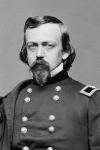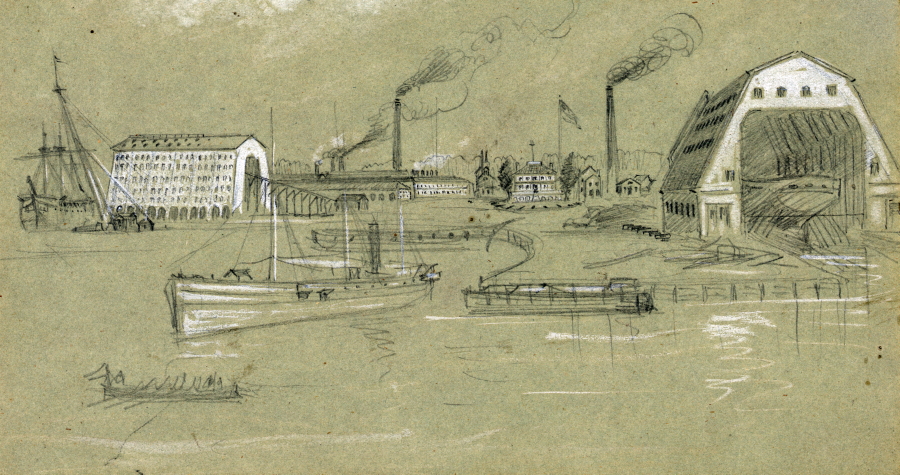 I have been looking at the role of the Washington Navy Yard during the Civil War of late, and particularly at the days after Lincoln’s election but before his inauguration, when D.C.’s situation looked precarious at best. In this fraught time, militias sprang up across the city, and the Navy Yard was especially looked to as a source of soldiers who would protect the capital. Today, we look at the earliest of the companies that were formed up in the Navy Yard neighborhood in January 1861.
I have been looking at the role of the Washington Navy Yard during the Civil War of late, and particularly at the days after Lincoln’s election but before his inauguration, when D.C.’s situation looked precarious at best. In this fraught time, militias sprang up across the city, and the Navy Yard was especially looked to as a source of soldiers who would protect the capital. Today, we look at the earliest of the companies that were formed up in the Navy Yard neighborhood in January 1861.
Early in 1861, with war in the air, and looking increasingly clear that Virginia would side with those seeking to dissolve the Union, Washington D.C.’s location became precarious. While large numbers of residents tended to side with the secessionists, many others wanted to preserve the Union and took concrete steps in this direction.
The most obvious of these steps was the formation of militias, and – unsurprisingly – the Navy Yard and its neighborhood were involved here. The need for militias was all the more urgent in that a detachment of Marines from the Navy Yard had been sent to man Fort Washington on January 5. Thus, on January 9, a meeting was held at the Odd Fellows Hall, near the Navy Yard. Chairing the meeting was Joshua L. Henshaw, formerly a marshal of the city and now a teacher. Henshaw called the meeting to order and, according to the Daily National Republican of January 10, “returned his thanks in an eloquent speech.”
Four men were nominated to “draft a preamble and resolutions expressive of the objects of the meeting.” One of them, a clerk in the coastal survey, declined the honor, saying “that if the crisis came he would be found fighting against the stars and stripes.” With the general agreement that a good evening’s work had been done, the meeting was adjourned.
Two days later, a followup meeting was held. Once again chaired by Henshaw, the Washington Evening Star devoted a fair bit of ink the following day to describing the scene. First order of business was the reading of the resolutions as drafted by the committee. William Garrett, a local carpenter read out the two paragraphs they had come up with, in which they invited all “Union-loving and law-abiding citizens” to “join in a military organization for mutual protection.”
The main event of the evening was a speech by General Edward C. Carrington. Carrington, the son of a Revolutionary War General of the same name, had served in the Mexican War and, in spite of being from Virginia, was a proud supporter of the Union. His speech touched on all these aspects, and when it was over “a large additional number then came forward, and signed their names to the resolution.”

A sketch of the Washington Navy Yard during the Civil War. Sadly, very few images of the D.C. militia from this time remain. (LOC)
Once a motion had passed unanimously tendering Carrington “a vote of thanks for his able and eloquent address” it was time to elect officers for this new militia. Unsurprisingly, two of the committee, Garrett and Samuel E. Arnold, Clerk, were elected First Lieutenant and Captain, respectively. Rounding out the officers were John Shinn, Second Lieutenant and John A. Willett, Third Lieutenant.
The unit thus formed eventually became Company C of the Union Regiment, and was assigned to the Seventh Battalion of the D.C. Militia, which was under the overall command of Colonel Charles P. Stone. They marched – under Captain Arnold – during the inaugural procession, and then were part of the procession taking ex-President Buchanan to the train station. Shortly thereafter Arnold was moved to a different unit and his position was taken over by George W. Miller. The most comprehensive history of the war has no history for Company C: Like many at the time, it was raised for only three months, and was thus disbanded on July 17, probably without ever having left the city limits.
More on other local units over the next weeks.
